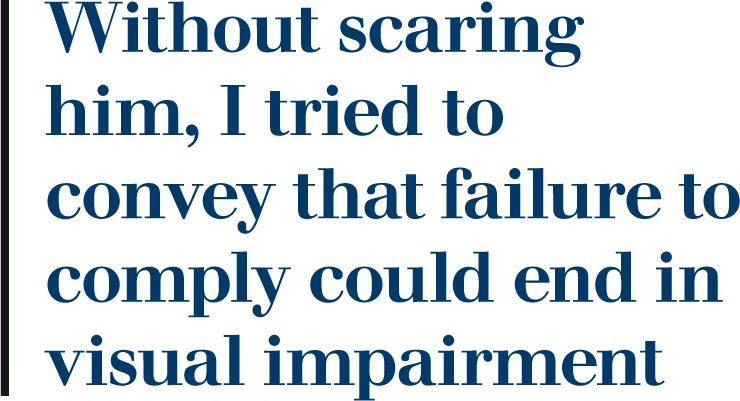Learning how to manage scared noncompliant patients
Patients can enter your practice with a variety of fears regarding their vision problems. Benjamin P. Casella, OD, FAAO, and chief optometric editor of Optometry Times, explains the importance of quelling patients' fears and making them comfortable during their exam.

Fear of going blind (scotomaphobia) ranks high on the list of people’s most feared medical conditions.1 Phobias, by definition, are irrational and can cause patients to act irrationally. A prime example would be when a patient becomes too scared to comply with follow-up care and retreats into denial and/or ignorance of his condition.
With this in mind, I am periodically reminded why optometry (or any other healthcare profession) is something that we don’t simply do but instead something we practice.
Continuing education requirements are rightfully imposed with this concept in mind. Our diplomas are symbols of the beginning of a lifetime of learning, and every patient encounter presents itself as a learning opportunity-if we are open to learning. However, dealing with patients’ emotions and perceptions of their ailments is an art form for which there is no cookie-cutter approach.
Previously from Dr. Casella: Dental and Optometric Care Access Act gains traction
Not uncommonly, one of my glaucoma patients asks me if she is going to go blind. My knee-jerk response is typically a hard “no” followed by a qualifying remark explaining that we’re going to follow an evidence-based approach to make sure that we are doing all we need to ensure good visual health. However, some patients need to be rattled a bit.

A few weeks ago, a 48 year-old patient returned after several years of noncompliance. My technician told me he was very nervous, and I could sense that as I checked his intraocular pressures. When I said, “It’s been a million years, my friend”, he told me he just didn’t want to think about his glaucoma although he knew it needed to be addressed. This disconnect between what he knows to be true and how he acts on that truth points to his underlying phobia.
I tried to balance conveying that failure to comply with treatment could end in severe visual impairment without scaring him away again. I also said that he and I were a team and that I wasn’t going to bark orders at him. This was geared toward two goals: convincing him to comply with his treatment and making him feel as though he wasn’t alone. I gave him a sample of his medication and made sure his insurance covered it before scheduling him for a follow-up in a few weeks.
I hope I continue to better myself in dealing with such situations, and I hope he comes back.
Reference
1. Scott AW, Bressler NM, Ffolkes S, Wittenborn JS, Jorkasky J. Public Attitudes About Eye and Vision Health. JAMA Ophthalmol. 2016 Oct 1;134(10):1111-1118.
Newsletter
Want more insights like this? Subscribe to Optometry Times and get clinical pearls and practice tips delivered straight to your inbox.